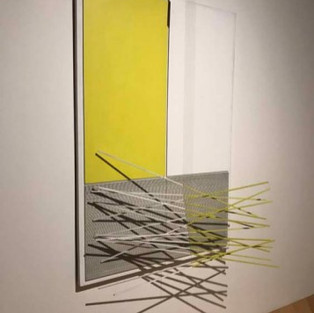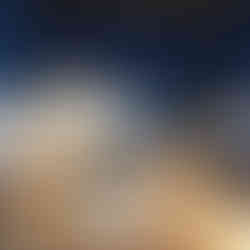Kinesthesia: Latin American Kinetic Art
- artandcakela
- Dec 18, 2017
- 5 min read

Gyula Kosice ‘La Ciudad Hidroespacial’ (The hyrdrospatial City). Photo Credit: Mario Vasquez.
Kinesthesia: Latin American Kinetic Art (1954-1969)
through January 16
In participation with Pacific Standard Time La/La at the Palm Springs Art Museum, Palm Springs
By Mario Vasquez “Kinesthesia” is defined in the Oxford Dictionary, “as awareness of the position and movement of the parts of the body by means of sensory organs (proprioceptors) in the muscles and joints.” In Latin America, artists sought to connect movement of an artwork with the sensory and position of the viewer. Latin America in the 1950s and early 1960s saw an embracing of Modernism and Modernist culture. With the building of Brasilia, the new capital city of Brazil, by Oscar Niemeyer using constructivist principles in architecture, South America saw a wave of optimism in the future. While Niemeyer was building Brasilia, 22-year-old Venezuelan kinetic artist Jesus Rafael Soto was exhibiting at Galerie Denise Rene in Paris, France, along with Marcel Duchamp and Alexander Calder. The group show Le Mouvement began an exchange between Paris and South America where new ideas of kinetic art developed under this wave of the very optimism in the future and the new.
Nestled between Calder and Duchamp, and the Light and Space Movement of the late 1960s and early 1970s, Kinesthesia: Latin American Kinetic Art curated by Dan Cameron at the Palm Springs Art Museum, tells the story of kinetic art and its place within the development of Modernism in Latin America. In this compelling and beautiful exhibition, Cameron presents nine Latin American artists — Martha Boto, Carlos Cruz-Diez, Horacio García-Rossi, Gyula Kosice, Julio Le Parc, Alejandro Otero, Abraham Palatnik, Jesús Rafael Soto, and Gregorio Vardánega — whose work embraces movement, color, and light.
As one enters the galleries of the exhibition, works are timed to turn on and off randomly. While passing by, each work seems to come alive with lights and movement. The exhibition begins where it ends with a sculptural work by Julio Le Parc, Cloison a lames reflechissantes (Partition with Reflective Strips) 1966/2005. Le Parc’s work is displayed alongside Jesús Rafael Soto. The work shown in the first gallery by Soto are gray and black, but later work demonstrates his experiments in color. Soto’s work shows a tension between the sculptural and the painterly. In a work like Vibration, 1959, Soto demands that the viewer move across the picture plane to experience the sense of movement, pattern and optical structure.
Carlos Cruz-Diez uses pattern and color to test and experiment with the senses and perceptions of visualizing color. Works like Physichromie 402, 1968, color and pattern create optical patterns and geometries that connect with the viewer as he moves across the picture plane and asserting within itself and with the person observing the work. In his most famous work, the installation Chromosatuation Cruz-Diaz divides the installation into 4 primary colors (blue, green, yellow, and red). As the viewer enters, saturates his vision with the colors, and moves from room to room, the artist wants the viewer to train his eyes to control the intensity of the light. Thus, giving the person an ability to control the intensity of the light and colors within the installation.
Other artists such as Gregorio Vardánega and Martha Boto employ mechanical lightboxes to produce beautiful effects of reflection, light, and shadows. Vardánega and Boto’s work come to life with each piece set by a timer. Vardánega’s work is concerned with the mechanical nature of the kinetic work, incorporating electronics and circuitry, while Boto is focused on the lyrical and poetic nature of the movement and light. Alejandro Otero applies principles of kinetic art to architecture and urban design that emphasize rhythms of color and perception. Abraham Palatnik created films of movement, colors, and light called Cinechromaticos. Each Cinechromaticos is a wooden-box, with electrical circuits, and moving lights to produce harmonious light dances where colors and shapes move and change throughout each box. The art acknowledges the viewer and seeks to affect him by producing an immersive experience. For the artists in Kinesthesia, the future is here and the art should embrace both the present and the future.
The sculptural installation of Gyula Kosice’s La Ciudad Hidroespacial (The Hydrospacial City) 1946 – 1972, is the probably the most astonishing, because it directly reflects a true hopefulness in the future and man’s ability to travel beyond its own world. Hanging from the ceiling as if floating in the gallery space, Kosice’s sculptures are miniature versions of space stations floating in a star field. As the viewer inspects each piece, there are people set in miniature rooms or in spaces; living in a utopia set in outer space. Influences of science fiction, as well as the exploration of space which included Sputnik and the moon landings, permeate the installation with stars as spaceships float in the world of the future, and people live in this new world.
In 1966, the new world was embraced by the art world when Julio Le Parc won the Grand Prize at the Venice Biennale. Le Parc’s concern was the relationship between the artwork and viewer. According to the short documentary in the gallery, Le Parc wanted to connect the work with the viewer using light and movement. While the viewer may be passive, the lights and color were to engage the viewer. In the film and video installations of Le Parc, shadow, movement and light seem to dance in the darkened gallery. Continuel Lumiere Cylindre, 1962/2013, rays of light in a circular screen do a ballet throughout the rotund plane. Across the gallery, Continuel Lumiere avec quatre forms en contorsions, 1966, shows four light wires on motors turning and spinning on a darkened plane. Le Parc uses light and technology to create an immersive environment by the espousal of technology. This is a future that Le Parc wants the viewer to both witness and experience simultaneously.
Taken along with the other kinetic works in the exhibition, there is a sense that the future embraced technology to create a new world from the old. The period covered by the exhibition ends around 1966 with Le Parc winning the Golden Lion at the Venice Biennale. After the late 1960’s, a wave of political unrest, spurned by the intensity of the Cold War, and dictatorships emerged throughout Latin America. The optimism in a future created by the embracing of technology and a utopian spirit began to decline. The movement shifted from an imagined utopia to a political fight. After 1970, Le Parc began making political work such as punching bags that portrayed police, politicians, and judges for his survey exhibition at the Pompidou Center in 1975. Kinesthesia is an excellent show because, it not only gives us a glimpse of a lost time when a utopian spirit, aligning itself with movement, light, color and technology, reflected the kind of optimism that was forever lost in a cynical age. This is a must-see show for anyone who is interested on how art, technology, and interaction were successful in a utopian age.
Palm Springs Art Museum 101 Museum Drive, Palm Springs, CA http://www.psmuseum.org
#losangeles #kinesthesia #art #painting #PalmSpringsArtMuseum #kineticart #PalmSprings #losangelesart #contemporaryart #southerncalifornia #abstract #artgallery #gallery #museum #artandcake #assemblage #artexhibition #installation #ArtandCakeLA #fineart #artists #artist #PacificStandardTimeLALA #mixedmedia #arts #environment #artreview #PalmSpringsArt #sculpture #artmagazine #ArtandCulture #exhibition #latinamericanart #pstlala #exhibit






















































